Another Really Cool Teaching Opportunity
October 3, 2022
By Debra Pearson
As a (retired) thirty-year high school instructor, no matter what, destiny wills that I am always the teacher. In my former career, I was a Language Arts classroom educator. In my current life, I am a teacher of the forest. I recently was offered what I thought would be an easy two-hour per day afterschool nanny position: beginning at 3 pm, three elementary aged siblings ages 9, 6, and 6 (fraternal twins) would be fed a snack, helped with homework, and nanny-sat until their parents finished work at 5. No worries. However, on my first day as nanny, I could not help but notice the small forest; a small piece of land that sloped and separated the family’s backyard from huge power towers that dominated the landscape. I immediately recognized three equally towering White Oak trees that made a triangular stance to the left, middle and right of the property. Behind the White Oaks was a Beech, a Southern Read Oak, Dogwoods, Sweet Gums, Tulip Poplars, a mature Hickory, and when I saw a Sourwood tree tucked discreetly in mid-story fashion in the outer corner of the landscape, I knew the small forest that the family called their backyard was special.
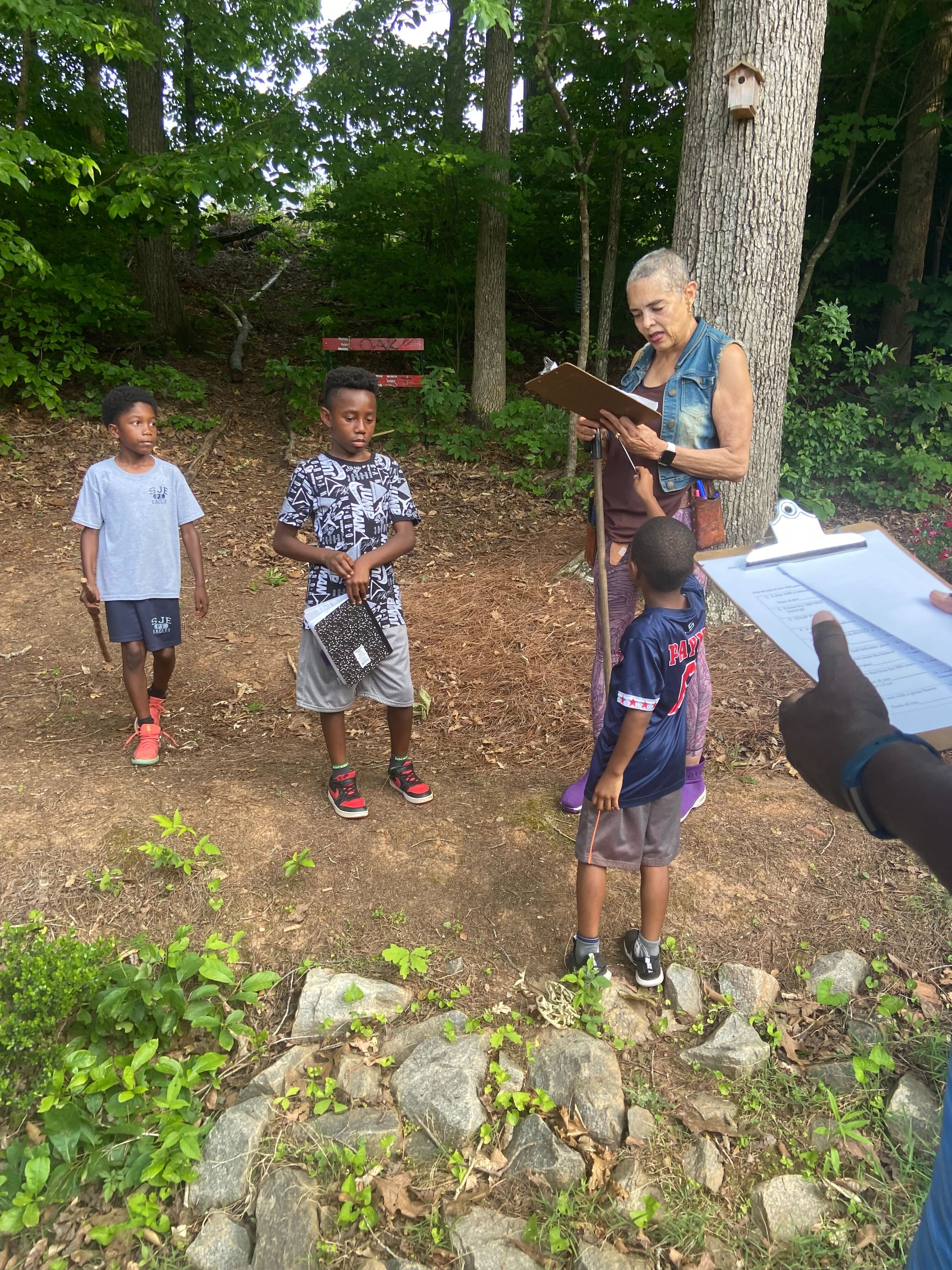 On day one, I invited the children to walk with me into the forest to further investigate. To my great delight, many indicator plants were present: Solomon Seal, Horse Balm. Wild Ginger, Lion’s Foot, Solomon Plume, and then I beheld…as Eco A director, Kathryn Kolb informed, the ‘smoking gun’ of an old growth forest remnant, the three-leaf indicator plant named Trillium. I startled the children when I screamed with delight upon finding it! And that’s when the teaching idea was hatched. I decided that being a nanny for the children had a much larger purpose. I would educate the young ones about the glorious old growth forest remnant that existed in their backyard.
On day one, I invited the children to walk with me into the forest to further investigate. To my great delight, many indicator plants were present: Solomon Seal, Horse Balm. Wild Ginger, Lion’s Foot, Solomon Plume, and then I beheld…as Eco A director, Kathryn Kolb informed, the ‘smoking gun’ of an old growth forest remnant, the three-leaf indicator plant named Trillium. I startled the children when I screamed with delight upon finding it! And that’s when the teaching idea was hatched. I decided that being a nanny for the children had a much larger purpose. I would educate the young ones about the glorious old growth forest remnant that existed in their backyard.
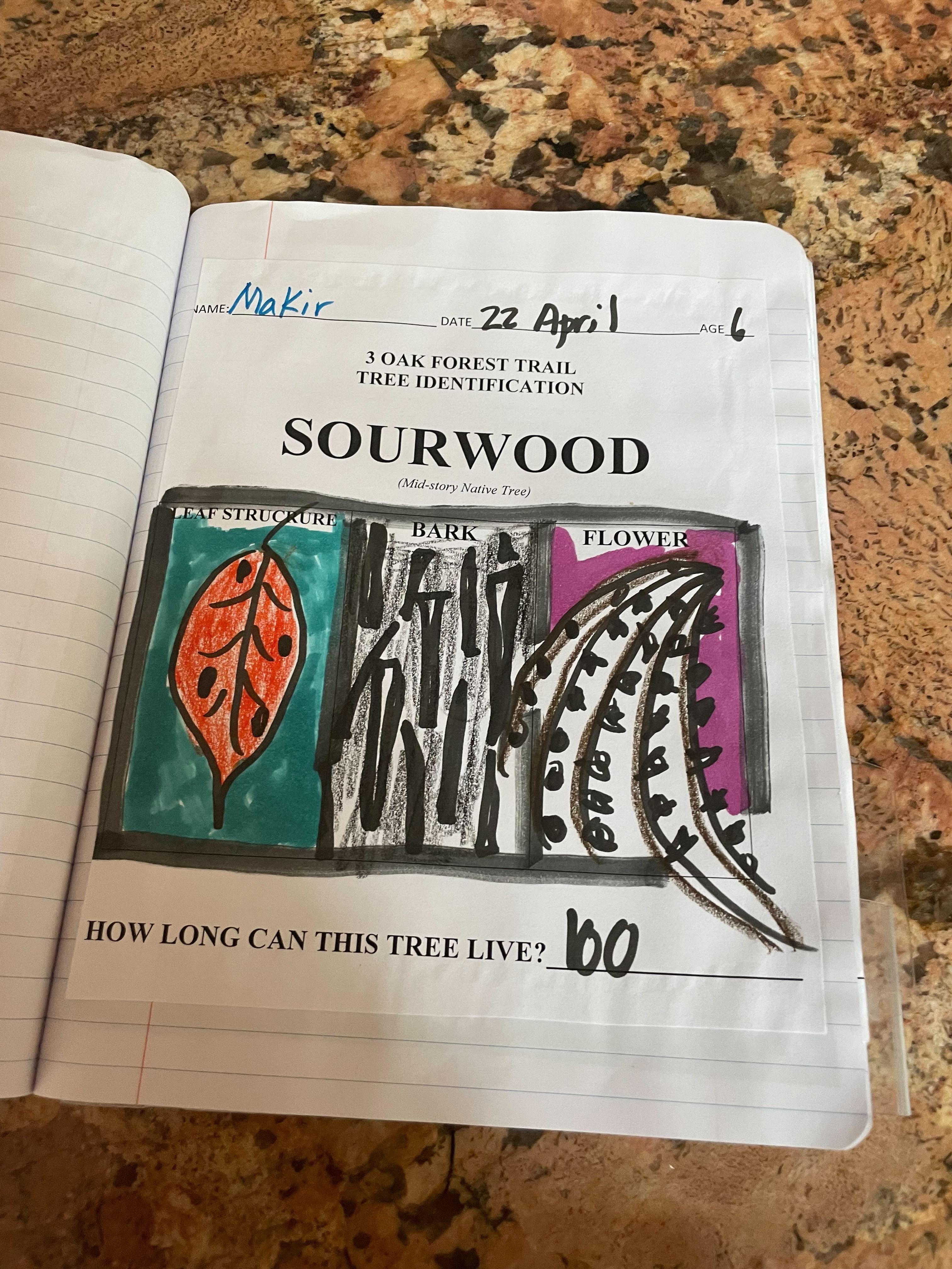 The first task that I gave the children was that of trail builders. The children and I collected felled branches and limbs and created a narrow series of trails that interlocked around and throughout the forest. It took a couple of days to complete, but the children were super excited because for the first time, they had access to their backyard and could run and play in it. I encouraged the children to walk the trails each day, and almost immediately the trail had the crushed leaf markings of repeated human footsteps. The trail building worked around the existing plants. I used each trail detour as a teaching moment: “Nope, the trail can’t continue this way; there’s Horse Balm growing here” or “There’s Wild Ginger there.” “Yes, the trail must go this way because a patch of Solomon Seal is growing a few footsteps away.” It was truly a rush to see the children’s enthusiasm and the extent to which they could remember and identify each plant species. They all adopted and fiercely protected the one Trillium forest resident, reminding each other to “be careful” as they ran through the trail where it lived.
The first task that I gave the children was that of trail builders. The children and I collected felled branches and limbs and created a narrow series of trails that interlocked around and throughout the forest. It took a couple of days to complete, but the children were super excited because for the first time, they had access to their backyard and could run and play in it. I encouraged the children to walk the trails each day, and almost immediately the trail had the crushed leaf markings of repeated human footsteps. The trail building worked around the existing plants. I used each trail detour as a teaching moment: “Nope, the trail can’t continue this way; there’s Horse Balm growing here” or “There’s Wild Ginger there.” “Yes, the trail must go this way because a patch of Solomon Seal is growing a few footsteps away.” It was truly a rush to see the children’s enthusiasm and the extent to which they could remember and identify each plant species. They all adopted and fiercely protected the one Trillium forest resident, reminding each other to “be careful” as they ran through the trail where it lived.
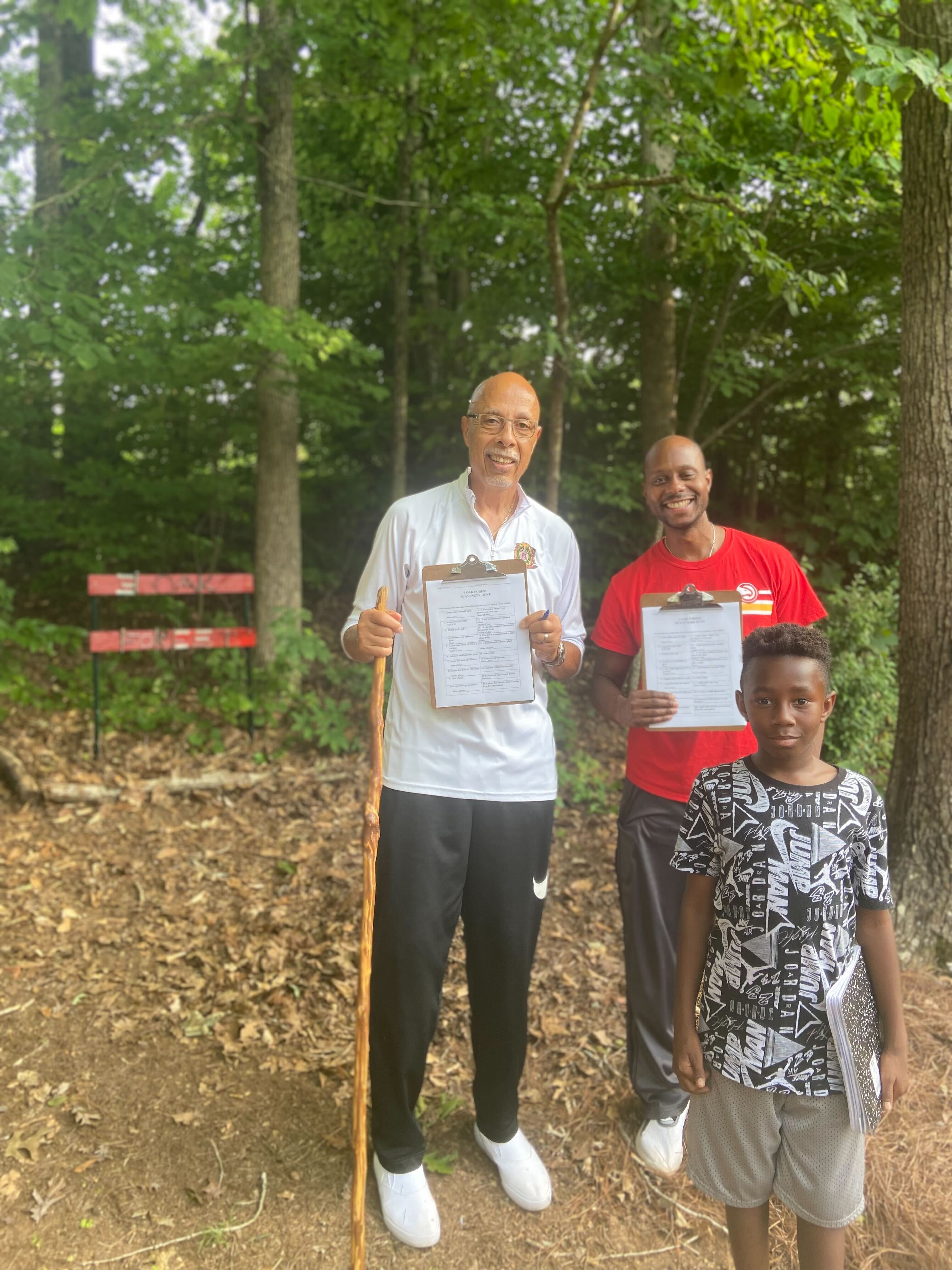 Each day the children focused on a different tree or plant in their biodiverse backyard classroom. By the end of the third week each child had identified, drawn, and colored the leaf, bark, flower or fruit samples of almost a dozen native trees. Also, they logged into their notebooks the shapes of ten indicator plants that grew in the forest. And from there…the curriculum morphed. In a forest context the children wrote Haiku poems, learned sentence patterns, developed a vocabulary list, and wrote and shared stories.
Each day the children focused on a different tree or plant in their biodiverse backyard classroom. By the end of the third week each child had identified, drawn, and colored the leaf, bark, flower or fruit samples of almost a dozen native trees. Also, they logged into their notebooks the shapes of ten indicator plants that grew in the forest. And from there…the curriculum morphed. In a forest context the children wrote Haiku poems, learned sentence patterns, developed a vocabulary list, and wrote and shared stories.
By week four I suggested that the children invite their neighbors and friends to a forest dedication. In honor of the three towering White Oaks that dominated the canopy, the 3 OAK FOREST Dedication materialized into an amazing event that included as guests their grandfather, three of their teachers, several neighbors, school, and neighborhood friends, and of course their two very proud and appreciative parents. During the dedication event the children became the teachers by leading each guest on a tour of the forest. The children became the voices of the trees and plants, and they conducted their teaching responsibilities with the upmost respect and reverence.
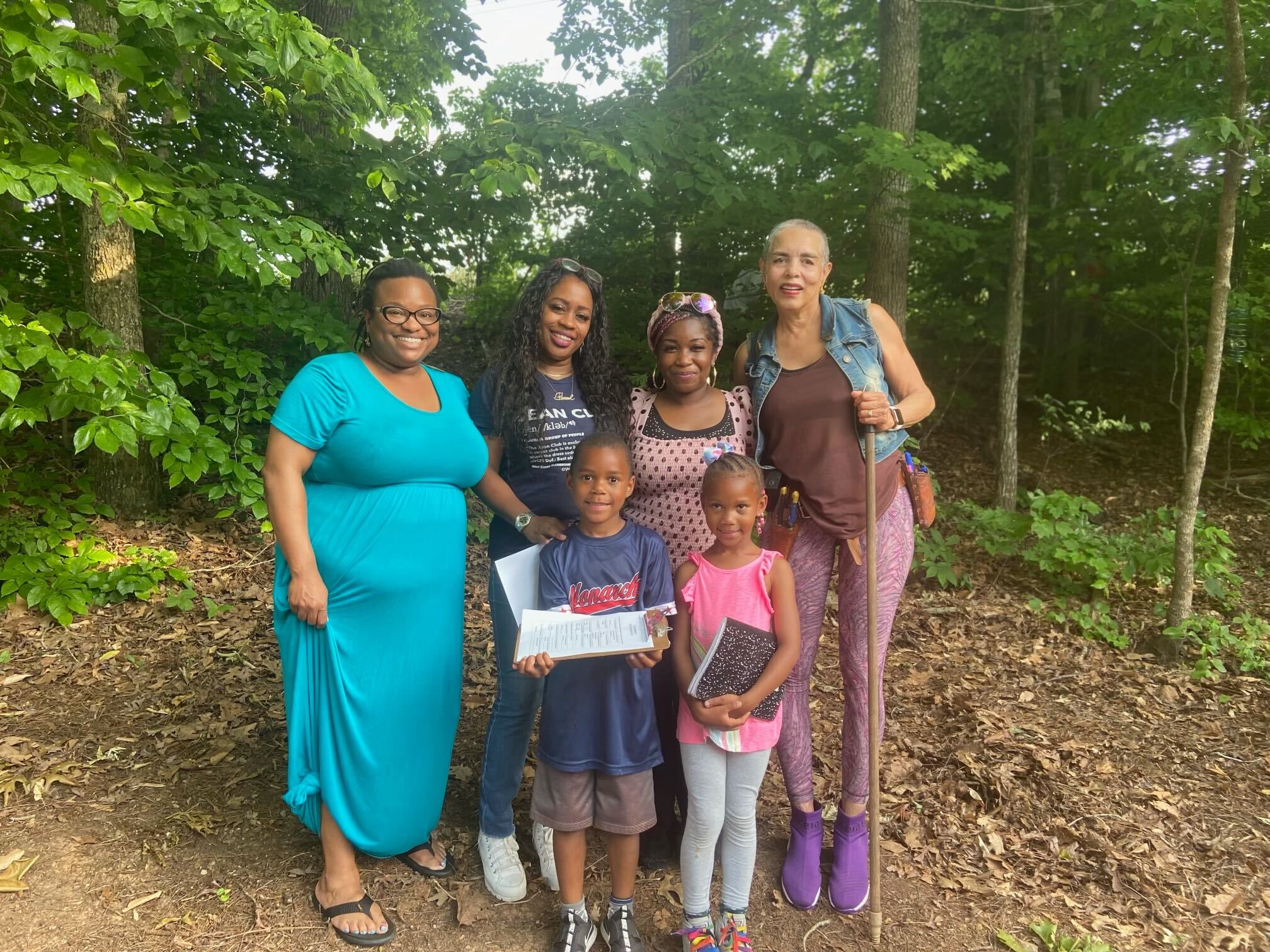
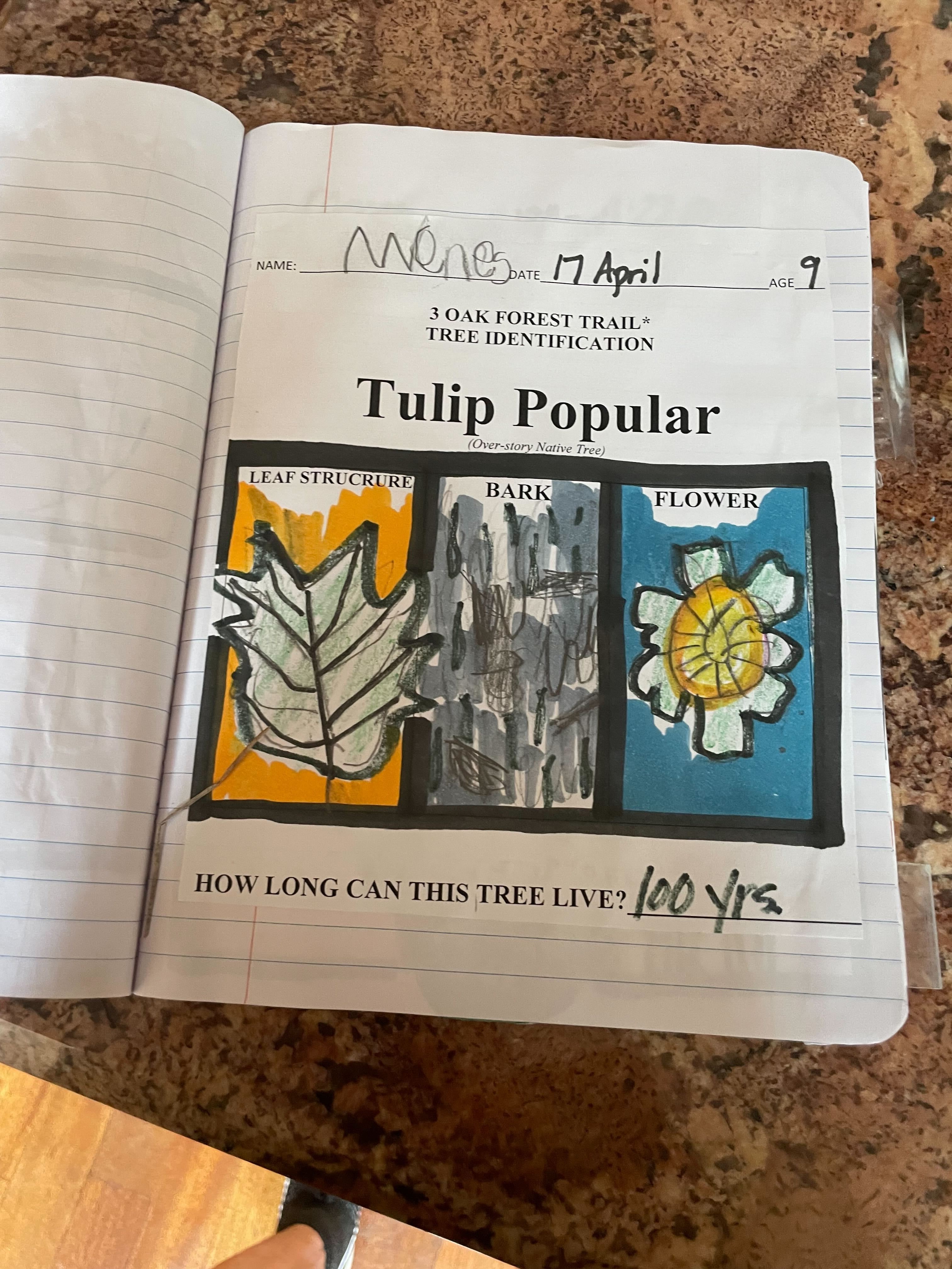
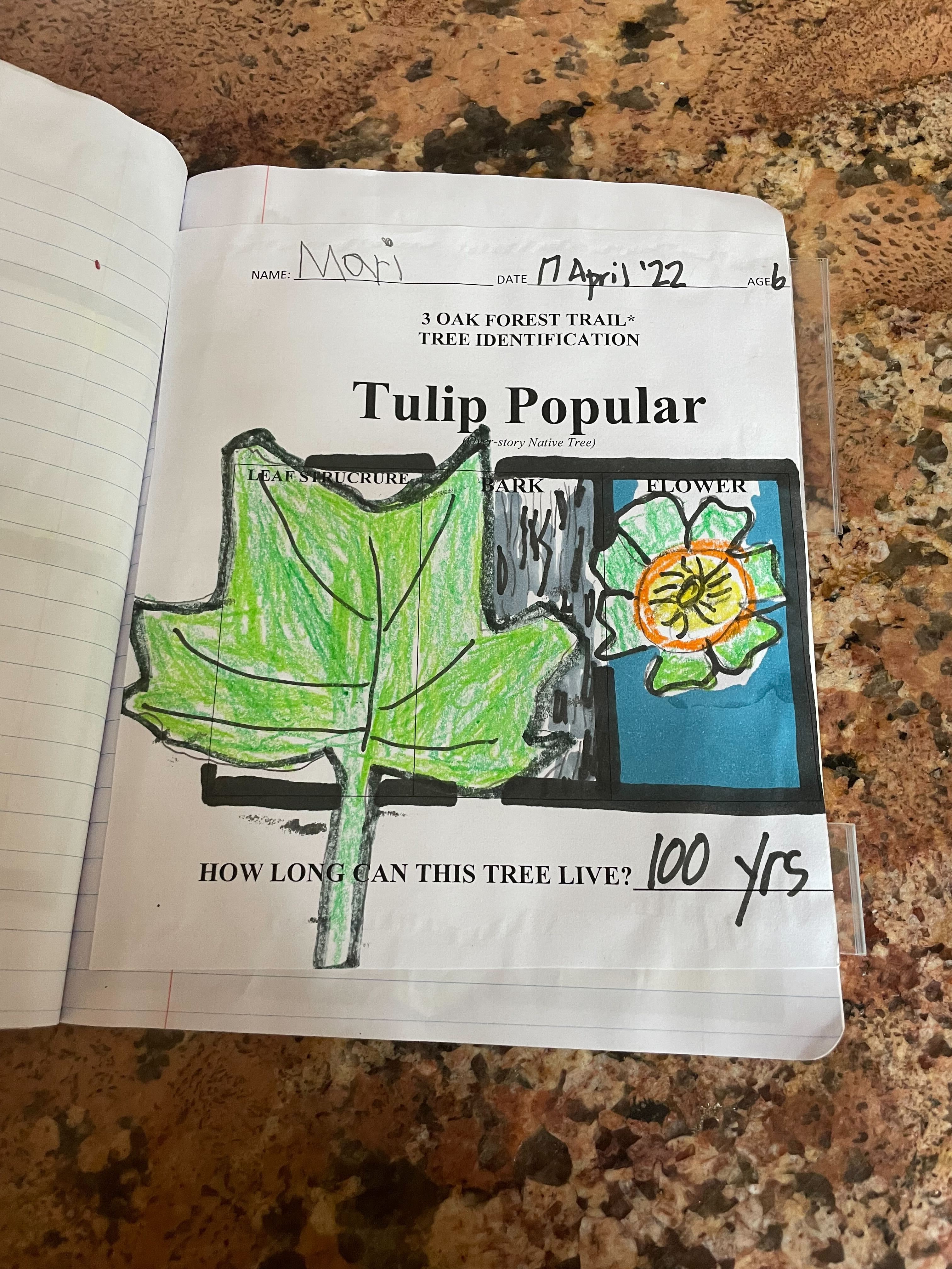 My nanny/forest teaching experience fed my need to educate. However, over the course of four weeks, teacher and students became one and the same. The children are now the teachers of their outdoor classroom. It is my hope that their connection to the forest has been forever baked in the fire of their experiences, and that they become stewards who will nurture and protect the forest forever.
My nanny/forest teaching experience fed my need to educate. However, over the course of four weeks, teacher and students became one and the same. The children are now the teachers of their outdoor classroom. It is my hope that their connection to the forest has been forever baked in the fire of their experiences, and that they become stewards who will nurture and protect the forest forever.
Leave a Reply